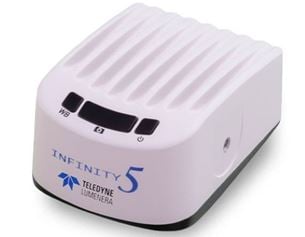Recertified
Stock No.: 25-355-RCD-05P
Recertified Code: 05P
(All Original Parts Included, Perfect)
Recertified Products
Typically 1-2 Recertified Products are in stock at a time. Please contact our sales team if you would like exact availability of an item.
Recertified products are those identified with the recertified logo indicating they were returned to Edmund Optics® and cannot be sold as new for the following reasons:
- Open Box – Missing original packaging
- Cosmetic Blemishes – Scratches, rub marks or other minor cosmetic imperfections
- Service/Repair – Product has been serviced to the factory original specification
- Factory Returns – Product has been returned in its original condition
Recertified products are inspected for damage and any necessary repairs are made. Products are then certified by Edmund Optics® to be in good working order. Since quantity is low, recertified products are sold on a first come, first serve basis. Any imperfections will be listed in the description, indicated in the stock number, and categorized by the table below. When purchasing recertified products, the Edmund Optics® standard return policy applies.
View all our recertified products in the Web Specials section of our website.
| Parts |
Cosmetic |
05 |
All Original Parts Included |
P |
Perfect |
04 |
Missing Manual |
N |
Minor Defect/Scratches |
03 |
Missing Manual and Small Accessory |
J |
Major Defect/Scratches |
02 |
Missing Manual and Large Accessory |
|
|


or view regional numbers
QUOTE TOOL
enter stock numbers to begin
Copyright 2025 | Edmund Optics BV, De Maas 22B, 5684 PL Best, The Netherlands
California Consumer Privacy Acts (CCPA): Do Not Sell or Share My Personal Information
California Transparency in Supply Chains Act
The FUTURE Depends On Optics®